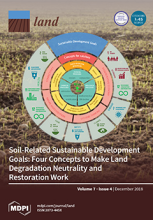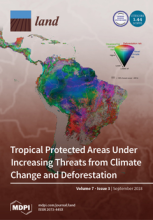Land Library
Welcome to the Land Portal Library. Explore our vast collection of open-access resources (over 74,000) including reports, journal articles, research papers, peer-reviewed publications, legal documents, videos and much more.
/ library resources
Showing items 37 through 45 of 93.Deforestation is recognized as a major driver of the loss of biodiversity and ecosystem services. It also disturbs natural processes such as biogeochemical, hydrological, and ecological cycles.
In this study, methods, originally developed to assess life course trajectories, are explored in order to evaluate land change through the analysis of sequences of land use/cover.
The Tehuacán-Cuicatlán Valley, Mexico, is the semiarid region with the richest biodiversity of North America and was recently recognized as a UNESCO’s World Heritage site.
Deforestation and forest degradation (D&D) in the tropics have continued unabated and are posing serious threats to forests and the livelihoods of those who depend on forests and forest resources.
Using landscape moderation insurance and Intermediate Disturbance Hypothesis (IDH) as frameworks, this study assessed the response of local assemblage among different land use regimes (mean β-diversity), using the Jaccard dissimilarity matrix in contrasting Human Modified Forest Landscapes (HMFLs
Due to its cost-effectiveness and repeatability of observations, high resolution optical satellite remote sensing has become a major technology for land use and land cover mapping.
There is extensive scientific evidence that both adaptation and mitigation are essential to address the problem of climate change.
This work aims to provide a comprehensive, wall-to-wall analysis of land use/cover changes in the continental areas of Portugal and Spain between 1990 and 2012.
Identifying protected areas most susceptible to climate change and deforestation represents critical information for determining conservation investments.





